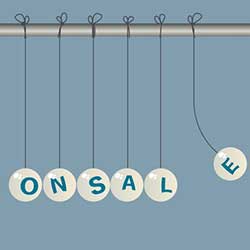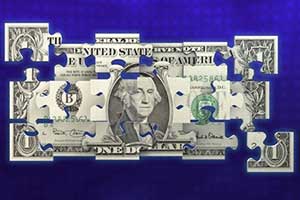
In a struggling economy and with family incomes in constant flux, it’s important to teach your kids good money habits. This includes learning to distinguish between needs and wants, the value of saving, and how to delay gratification. Below are some money insights that you and your kids can use to stay ahead of the game while actually enjoying the game of economics on a daily basis.
1. You might be saying one thing and teaching another.
Remember, your actions are more powerful than your words. If you and your partner constantly fight over money issues, your kids might associate money with stress. If you go on expensive vacations when you don’t have a job, your kids may never learn how to live within their means.
2. What to say when your child is salivating over the latest sneakers.
There’s nothing harder than saying “No” to your child’s wants. You can suggest a waiting period (see more below); you can suggest an “either/or” option (“either you get the sneakers or we go to the amusement park on Saturday”); or you can offer your child opportunities to earn the money to buy the sneakers. Spending their own funds gives kids reason enough to think twice about their purchase.
3. Don’t impulse buy—wait it out.
Impulse buying is a trap for adults and children alike. So how about establishing a rule for yourself and your kids? Set a rule that you will always take 48 hours to sleep on a purchasing decision for anything over $10. You’ll see how that need subsides as time goes by.
 4. Saving 15% of your income takes attitude.
4. Saving 15% of your income takes attitude.
My friend Elaine King explains in her book Family and Money Matters that saving is an attitude. “I have clients who make a million dollars a month and can’t save and others who make $50,000 a year and who are saving,” she told me once. If you develop a habit of putting away 15% of any income you make, little by little your savings will grow.
5. Use coupons and comparison shop.
For all your spending needs you can compare prices on websites like Hagoole, Nextag, and Bizrate and get discount coupons for purchases from online sites like Shop at Home, Coupon Mom, or Cuponeando. Do price comparisons and coupon searches with your young kids, or ask your preteens and teens to do the research for you.
6. No, the ATM is not a magic free money machine.
Young children see their parents inserting a plastic card into a machine that spits out money. You can’t deny that there’s something magical about that. To dispel the magic myth, go to the bank with your kids, deposit cash into your account, and show them the receipt from the teller. Then go to the ATM, take out $20 and print a statement that reflects the withdrawal and the new balance. Hard evidence is the best way to make the idea stick.
7. Those plastic cards and their bottomless pits.
When kids see you paying for gasoline and groceries with a plastic card, they think the card is a bottomless pit. Sit down with your kids when the credit card bill arrives, and go over the list of expenses. Then, write a check from your bank account to help them make the connection that the money had to be deposited into your account before you could pay this bill.
 8. Play with money, literally.
8. Play with money, literally.
By the time your kid is old enough not to put coins into her mouth, you can explain how many coins make up a dollar and so on. Slowly move into teaching them to make change, a valuable skill that will help put math into practical use.
9. Your child’s first savings account.
As soon as they can read, open an account for your kids where they can deposit any money gifts or allowances they receive. Review the monthly statement together and point out how their money is growing with each deposit and with the interest it earns. Encourage them to save for special things they want.
10. Play the Wants & Needs card game with your kids.
Learning the difference between a need and a want can be hard on us all. In each round, a selected player shouts “Need” or “Want” and the other players choose the best card in their hand. The judge listens to players sell their choices (ranging from underwear and contact lenses to bread and hair highlights), then awards a point to the best explanation. This game guarantees a lively debate with your kids about economics.
[youtube]http://www.youtube.com/watch?v=1tFjXWiTc5E[/youtube]











